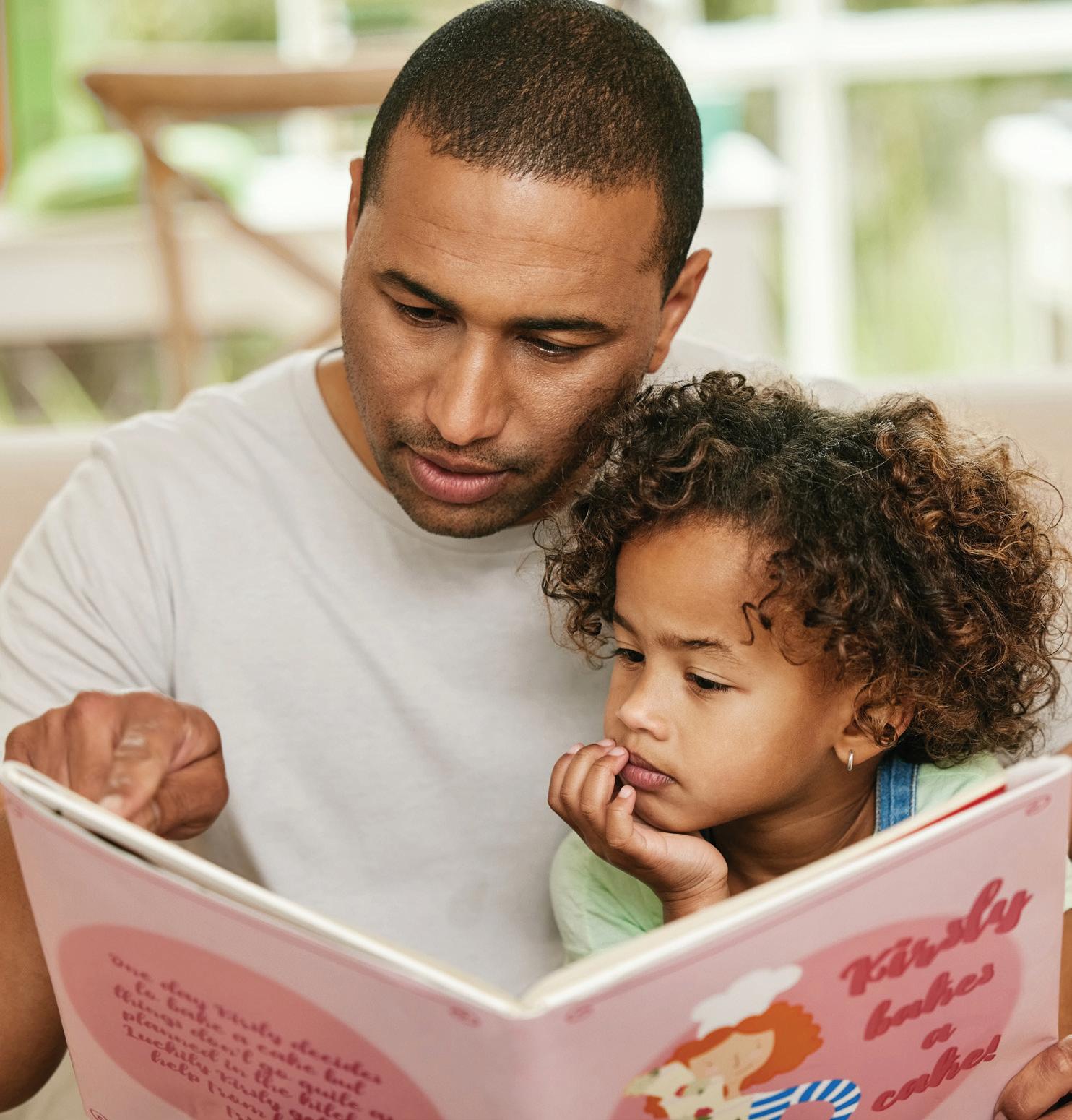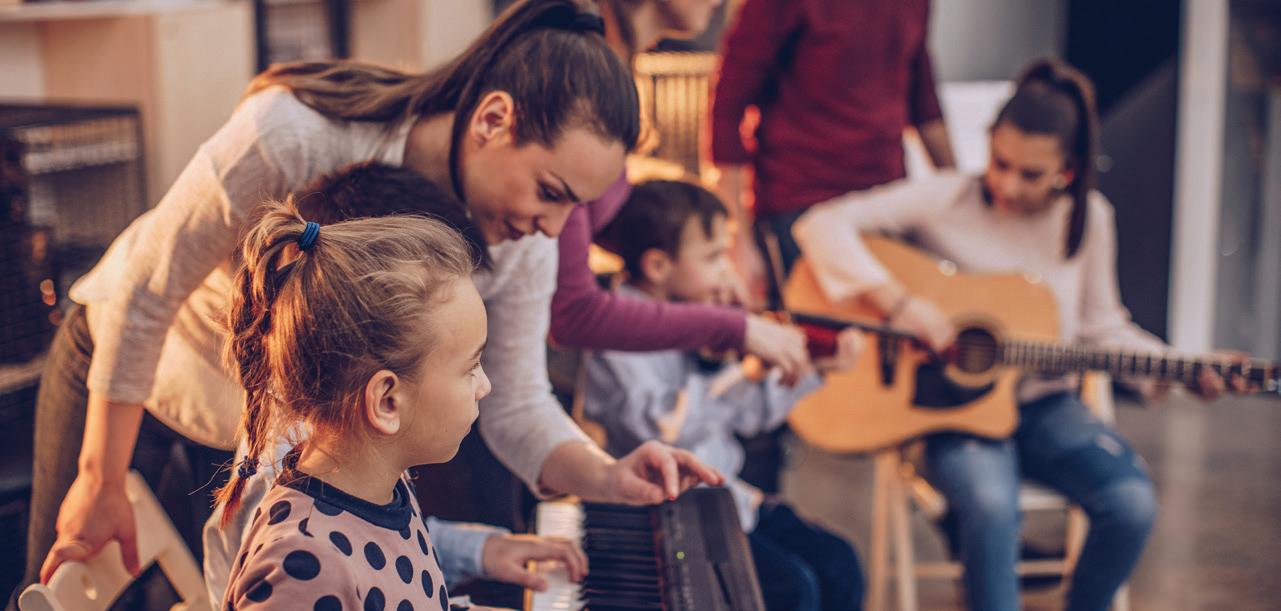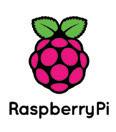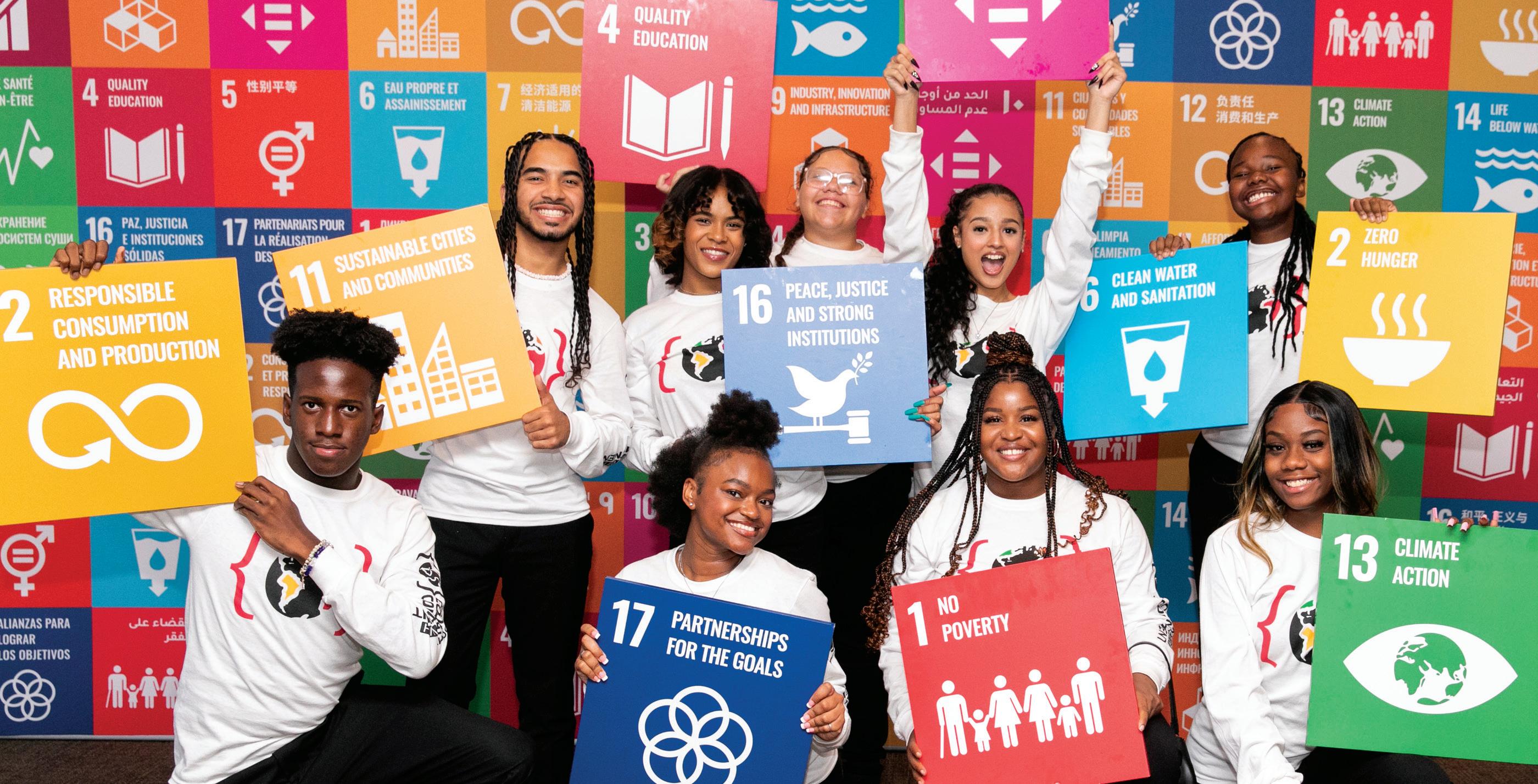Future of Education

The host of the My EdTech Life podcast shares how technology expands learning opportunities



The host of the My EdTech Life podcast shares how technology expands learning opportunities

Alfonoso Mendoza, host of the My EdTech Life Podcast, explains that while shiny new tech platforms are all the rage, sometimes keeping it simple is best.

Can you tell me about your background in education and technology?
My name is Alfonso Mendoza Jr., and I was born in the Deep South of Texas, right along the border of Mexi-

co. I graduated from high school in 1989 and went to university not wanting to be a teacher, or even get into education.
My first love was business, and that’s where I intended to make my fortune. Unfor-
tunately, my dad got sick and needed some help. I had to make a decision to find a more flexible job, and ended up applying for jobs as a math teacher.
Through my job, I was able to get comfortable
enough to take risks with integrating technology, and build a sense of community. I was comfortable saying, “I’m not the subject matter expert here, but I’m okay with not knowing everything.”
Having that vulnerability and working with my students with a mindset of, “OK, I’m just going to teach you what I know,” is what helped me grow.
What is something in the EdTech space that you wish more educators and parents would prioritize?
The best advice I can give to parents, educators, and districts is: keep it simple. There is so much technology out there and a lot of tech
seems to be doing a lot of the same things.
What we did in our district was adopt four major platforms. While we stuck to those core four platforms, we did encourage innovative teachers to search for and use other tools.
We wanted to use technology that we can get the most return on investment from for lesson delivery and ease of use for all users. So, if you keep it simple, and adapt as needed, it helps weed some of those platforms out that may offer the exact same thing.
I tell educators all the time: treat your platforms like an instrument. After a little while, you’re going to be playing some wonderful melodies, if you stick to it. n
Publisher Anthony Romero and Bayza Assefa Business Developer Razelle Amante Managing Director Julia Colavecchia Lead Designer Kayla Mendez Lead Editor Dustin Brennan Copy Editor Kandlyn Collins Digital Success & Production Manager Taylor Daniels Cover Photo Jenny Hollis PhotographyThere’s a movement underway in K-12 education, and everyone’s a stakeholder. Children can access the entire world in the palm of their hands, and schools are rising to the challenge of integrating technology. When coupled with progressive curriculum design and delivery, technology can ignite the vital flame of curiosity for students.
Over the years, I’ve encountered diverse insights on how K-12 administrators, teachers and parents can keep up with the latest technological advancements. Today, the Consortium for School Networking (CoSN) is empowering a community of school leaders to take an active role in shaping these trends.
CoSN’s new Driving K-12 Innovation series is produced by educators, for educators. An international advisory board of more than 100 K-12 experts has identified three trends schools must navigate in order to spur extraordinary teaching and learning experiences:

These are organizational- and human-capacity challenges that force educators to slow down, prepare themselves, and make the leap to innovation. Schools have a responsibility to understand how emerging
technology impacts the skills students need to be successful in their continuing education and careers.
These are megatrends that drive the needs and skills expected of students and educators. Schools are embracing realworld learning experiences that promote student-generated ideas and solutions.
These supporting tools expand opportunities and solutions. Some examples include augmented and virtual reality technologies, which enhance the physical world with interactive digital imagery and graphics. Schools cannot afford to address these trends in isolation. Technology is allowing school leaders and educators to form communities of collaboration, and CoSN is committed to providing assistive resources to build a better bridge to the future. n
Keith Krueger, CEO, CoSNAToniebox is a 5-inch, squeezable speaker with buttons shaped like cat ears. When you place a Tonie — a 3-inch-tall magnetic figurine — on the top of it, the Toniebox starts telling a story or playing music related to that character.
Users can pinch an “ear” on the box to adjust the volume, and tap the sides to fast forward, rewind, or change chapters. When they’re ready for a new story or song, kids can switch out the Tonie on the top of the box.
“It creates autonomy and empowerment for young kids because they can manipulate the figures on their own and it puts them in control of the audio experience,” said Drew Vernon, marketing director for Tonies. “It’s tactile as well, so it helps their fine motor skills.”
Tonies launched in the United States in 2020, during the pandemic, at a time when too much screen time was becoming an even bigger problem for kids. This screen-free tool was a hit.
“When you remove the visual stimulus, you put a greater responsibility on the listener, because they have to imagine what’s taking place,” said Vernon, noting that listening trains students to focus, imagine, and be creative. “That
helps them with problem-solving, and creative and critical thinking.”
Tonieboxes can supplement the reading that teachers and parents are doing with kids, offering stories from beloved children’s authors like Dr. Seuss and Eric Carle. It keeps kids engaged and helps them develop early reading skills, like vocabulary and comprehension.
Tonieboxes can also provide mindfulness exercises and social-emotional learning opportunities. With Creative Tonies, users can create up to 90 minutes of custom content, such as parents of grandparents recording themselves reading stories or teachers recording lesson plans, like instructions for small group work.
Cera Alber, who has been an early childhood educator for 10 years, uses Creative Tonies to record family and teacher messages and stories for her students. “The look of joy and surprise when they hear a familiar voice is so uplifting. Creating and then sharing this with the class is so much fun.”
Alber is a program and outreach director at Green Trees Early Learning Center Inc. in rural Pennsylvania. The center has purchased Tonieboxes
for each class. She says the kids love the independence they get when using the device.
“In our listening and quiet spaces, children have gravitated to a calm Tonie in selfguided meditation and soothing stories,” she said in a testimonial. “Being able to use the Toniebox has supported these children in social-emotional growth and self-regulation while having fun.”
Alber is a member of Tonies for Teachers, a program that encourages preschool and grade school teachers, librarians, and children’s museums to use Toniesboxes. The program gives teachers and other educators a 20% discount on Tonies products.

Teachers in the program feel supported, too. For example, there’s a Facebook group where the community comes together to discuss content and how they use Tonies in their classrooms.
Tonies is sharing the wonder of storytelling in 10,000 U.S. classrooms, as well as libraries.
There are more than 700 Tonies representing kids’ favorites like Disney, Sesame Street, Peppa Pig, Cocomelon, National Geographic, and more. Content is available in several languages, including English, Spanish, German, and French. Literacy advocate LeVar Burton, known for his

work on “Reading Rainbow,” joined Tonies as a spokesperson.
While the target audience is children ages 2 to 5, Tonies have applications for kids through age 9. It’s a great tool for children with special needs, too, since it’s tactile and creates a sense of control. n
Kristen CastilloFor more information, please email helloclass@tonies.com
A new tech tool is helping educators and parents boost kids’ literacy, and it doesn’t have a screen. Tonies, a digital audio platform for children, helps pre-readers and developing readers use their imaginations, allows them to develop reading skills, and encourages them to become storytellers.LeVar Burton and Tonies partnered to promote literacy
Families play an essential role in inspiring a love of reading and providing children with books that reflect the diversity of the world around them. So, it’s important to show our children that reading is more than spending 20 minutes a day with a book. Try these fun ways to encourage your child’s love of reading!

Read aloud together
Start a family tradition and add a storytime to your evening routine. When you read a book out loud with your child, you are modeling expression, articulation, and emphasis of written language. It’s also a low-stress way to bond as a family and create memories you’ll treasure.
You can make it interactive in a way that works for your family — have new readers point out words or read short
sentences, while more advanced readers can take turns with you. Have your child select a book they love or find a popular book series that the whole family can enjoy. Poetry, jokes, and favorite TV/ movie character activity books are great options, too.
Discover new points of view
If you want to raise an informed, inclusive child, look no further than your local library. Books can introduce your child to ethnicities and cultures that are different from their own, and they’re a great way to teach them about the wide variety of people they’ll meet throughout their lives.
Reading about other people’s routines, traditions, and communities exposes your child to new vocabulary words, concepts, and experiences, and grows important
like compassion. You can also share written and oral stories about your own family heritage to reinforce your child’s identity and confidence.
Encourage reading beyond books
Demonstrate the importance of literacy by applying reading to everyday life activities. Point out to your child
how often you read as you go about your day — menus at restaurants, food labels in grocery stores, and signage while shopping. At home, you can read the instructions to a game or toy, follow the directions to a science experiment, or learn a new recipe to cook a meal together.
These habits will motivate
to develop their literacy skills and grow their confidence in their ability to navigate the world. We hope you have fun doing these activities with your children. It will lay the foundation for your child to practice the joy of reading throughout their life. n
Anna King, President, National Parent-Teacher Association (PTA)We want our children to read every day to develop their literacy skills, but we don’t want it to be a chore that they dread doing (and we dread enforcing). Reading should bring our children joy, spark their curiosity, and open their minds to exciting real and imaginary stories.


The founder of Classtechtips.com discusses the future of EdTech in helping teachers integrate technology in the classroom.
Your blog is a powerful resource for educators to keep up with technological innovations. What inspired you to launch it?
In 2012, I spoke at an Apple education event in New York City, and shared some of the things I was doing with iPads and apps that I had found. After I spoke at that event, people started asking me where they could learn more about my work.
That was the year I started sharing ideas, apps that I found, strategies, and lessons that educators might find helpful on my blog. We just celebrated 10 years of the blog in 2022.
The introduction of the blog corresponded with social media websites like Twitter and Pinterest, places to share ideas. That was my first place
for sharing, then the books, quick reference guides, membership site, and podcast followed after.
What’s an emerging trend right now in tech that you are excited about?
One conversation I’m often having is around artificial intelligence (AI), which isn’t new to education. There have been many tools and adaptive learning software that use AI for everything from graphic design to helping decide what support or resources a student needs.
With things like ChatGPT and other tools that may have an influence in professional settings, the conversation has also branched into what teachers need to do to prepare students to navigate digital spaces after school.
What advice do you have for educators who are struggling to integrate traditional learning technology, or are struggling in general in the classroom?
It can be easy to get overwhelmed with all the different types of digital tools that are out there. My biggest piece of advice is to keep it as simple as possible.
Choose one great openended creation tool, something that allows you to do lots of great projects with your students, that has features like voice-to-text, audio recording, video, or whatever is important to you. Focus on ways for kids to share their learning.
Embrace what you’re asked to use by your school administrators, as opposed to trying to find lots of new things. It’s a great way to stay focused, keep things simple, and not get overwhelmed throughout the school year. n
The future of music education is bright but not without challenge. The pandemic highlighted inequities in resources and funding among schools, especially in historically marginalized communities. Although these issues can seem overwhelming, communities are increasingly calling for equitable opportunities for students, and access to music education must be a key component of this equation.
Equitable opportunities in music education begin with teachers. Now more than ever, there is a great need to recruit new music teachers into the

profession. It is critical that the music education profession builds a diverse workforce that is representative of students throughout the United States and the world.
With many schools placing newfound emphasis on student wellness, music educators can help students understand their own feelings and interactions with others through music. Similarly, music educators have the capacity to create belonging and connection in ways that are unique to music learning. n
 Scott R. Sheehan, President, National Association for Music Education
Scott R. Sheehan, President, National Association for Music Education
It is imperative that all children have the opportunity to unlock their musical pathways to self-discovery and understanding through a robust music education learned in school.
Broadcom Foundation believes that basic coding is a 21st Century+ skill that girls, under-resourced, and underrepresented youth need to become digitally literate and compete for highly skilled jobs in emerging industries built on technologies of the future.
Coolest Projects Global 2023 invites children everywhere, ages 18 and under to submit their coding projects by April 26. Projects will be showcased in the online gallery on June 6 for all the world to see! (https://online.coolestprojects.org)
Broadcom Foundation characterizes digital literacy as confident use of the full range of digital technologies, including some basic knowledge of coding. After-school Code Clubs (https://codeclub.org/en/) offer optimal project-based learning time for coding.
The Broadcom Coding with Commitment ™ award (https://broadcomfoundation.org/codingwithcommitment) will be presented at Coolest Projects Global 2023 to a

student in middle school who combines STEM learning with coding to solve a community problem that aligns with the 17 Sustainable Development Goals of the United Nations.


See Broadcom Foundation’s article in the next edition of USA Today entitled Job One of the 2022 CHIPS and Science Act: Closing the Digital Divide.
PROJECT REGISTRATION IS OPEN! #coolestprojects/coolestprojects.org
